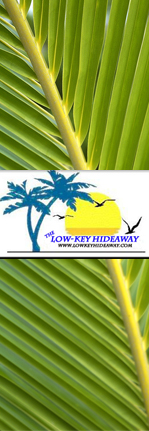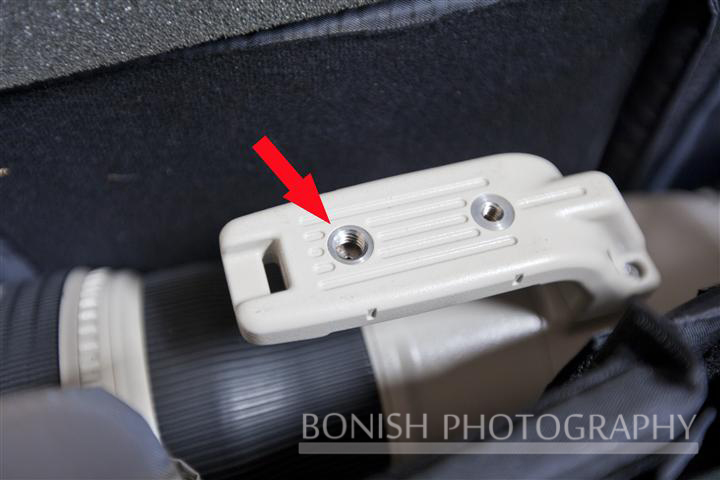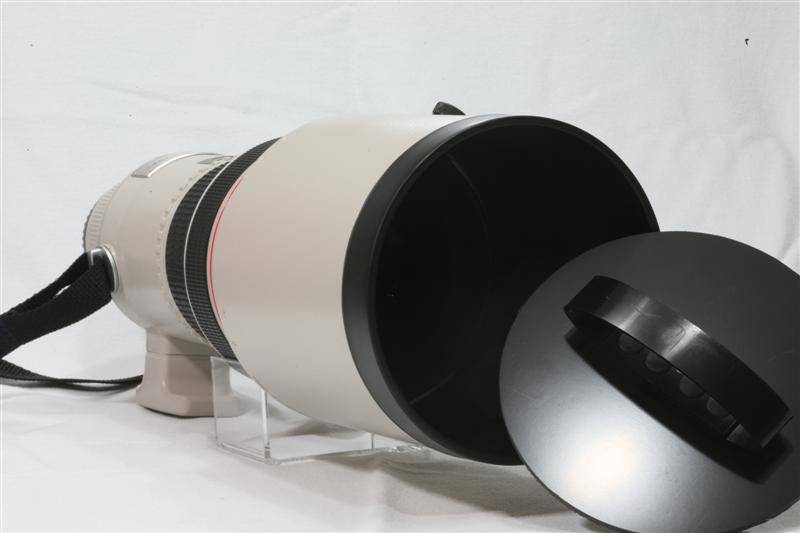 |
|||||||
|
|
|||||||
|
|
Canon EF 800mm f/5.6L USM IS Lens Review We've lusted over this telephoto lens for years. It would have been the sweetest set-up to have while we lived and worked in Yellowstone National Park during the 2009 season. Being on the water and shooting around the Cedar Keys on a daily basis, we figured we'd rent one and see if it was all it was cracked up to be. Read on to see our thoughts. The Stats: This is the longest telephoto lens among Canon's lineup, and a terrific choice for any long-distance application suited for outdoor sports, wildlife, news photojournalism, and so on. It's actually lighter than Canon's EF 600mm f/4L IS lens, weighing just under 10 lbs and considerably lighter than our Canon EF 400mm f/2.8L IS lens. It uses a refined optical design, with two fluorite lens elements, one UD element, and one Super-UD-glass element, for outstanding correction of color fringing and superb contrast and sharpness. This super-telephoto lens uses Canon's signature off-white magnesium-alloy barrel construction to enhance its light weight, and has weather-resistant gaskets throughout for use in harsh conditions. It's compatible with both the EF 1.4x II and 2x II tele extenders for even more reach: EOS cameras with 45 AF points will continue to provide autofocus at the center AF point when the lens is used with the 1.4x extender. Finally, it's image stabilized, providing up to 4 stops of correction for camera shake. This makes it even more practical in many situations. That's straight from Canon's Website with a few of my own thoughts thrown in. Our Simple Thoughts after 10 days of Use: We've always talked about the big guns of Canon Lenses while we're on location and complaining about never being close enough. Lets face it, when photographing wildlife, you can never have enough zoom. Canon offers multiple lenses ranging from a small 200mm fixed lens up to an unthinkable 1200mm that is almost impossible to come by. Their 800 f/5.6 is the longest consumer lens available as that 1200mm is so coveted, it's usually reserved for military, Law Enforcement or those with such a disposable income they don't balk at the $120,000 price tag. Here is a great review of that lens that is pretty funny to read on the B&H website. Whom ever wrote it had a good sense of humor. The Canon 800mm f/5.6L lens isn't all that inexpensive either. Breaking the bank at $13,899 from B&H, it'll cost about as much as the average used car. Putting the price aside, the lens will allow you to photograph wildlife in their natural setting without the need to get so close that you disturb the animals behavior. There would be no way we could ever afford this lens, so the next best thing would be to rent one and see if it lived up to all the dollar signs I see when drooling over it online. When it arrived in the mail I could barely wait to load up the boat and go see what I could find.
First things first. A few tips about handling the lens and getting it ready to go shoot. The 800mm giant is actually lighter than our Canon 400mm f/2.8L lens believe it or not. I guess the Fluorite glass Canon uses for those lenses is pretty hefty stuff and the 400mm wins the game for Low Light Photography being as it can open up to f/2.8. The 800mm is also easier to hand hold due to the better weight distribution because of the lens itself being longer than the 400mm. Not that we'd be hand holding this monster all that much, but it's nice to be able to pick it up and fire off a few shots if the need arises. I mounted the Wimberley P-50 Plate on the foot of the 800mm so we'd be able to have it riding the Wimberley Gimbal Head which would make the long lens very stable and accurate.
The front screw socket in the 800mm foot needs one of the 3/8" to 1/4" Brass Reducer Bushings that Wimberley supplies when we had ordered our Gimbal Head and Plate to begin with. That was confusing at first why one of the mounting screws would screw in but the other kept falling out.
Good to know if you're ordering this lens or renting one. You wouldn't want to be stuck with a rented lens and not be able to attach it to the Gimbal Head.
The 800mm fits into the Pelican 1650 box we use to haul our gear around with the hood in the shooting position, which I think is the best way to store the lens. This way that big, front element is always protected from anything touching it and if you need the lens in a hurry, it's ready to be picked up and fired off without having to re-mount the hood. It was also perfect that our Don Zeck Lens Cap fit both the 400mm and the 800mm. Since we'd be shooting with one while the other was lying around waiting, it meant that one of them always had the protective lens cap on. More on that later. Both lenses come with their own hard suitcases from the factory, but the only way to carry them in the supplied cases is with the hoods reversed and I think they fit so snuggly that you cant even have the mounting plates attached to the foot? So those cases are a major FAIL in my mind as most folks don't strip down their lenses every time they're done shooting. At least I don't.
Shooting with this lens attached to the Canon 7D body, with it's 1.6 crop sensor, I'm basically shooting with a 1280mm image stabilized lens!!! Yes, that's HUGE!! That's much closer than I'm used to with the 400mm with the 1.4x extender attached, which is my normal combo. That combo added up only gives me an equivalent of 896mm, and the 1.4x extender slows down the auto-focus just a tad bit. I noticed that as long as the light was bright, the 800mm would lock on pretty fast. Although I think the 400mm locks on and is able to focus track much faster even when it's set to f/5.6. I was amazed how much harder the 800mm lens was to get used to. When we first got the 400mm, the first few weeks were a total lesson on using a super-zoom and not being able to zoom out as the subject moves or gets closer. It took me weeks to master following a moving subject when you're that tight. There was little room for error. With the 800mm, double that error factor. I think my first few days I deleted about 80% of my images. By the 3rd or 4th day, after shooting with it more and getting more used to is, I just went back and deleted almost all of them from that first day.
If shooting on solid ground with this lens wasn't hard enough, being out on the boat and shooting with this monster is even more of a learning experience. It probably wasn't the best idea to be shooting with this long of a lens for the first time on a floating boat with a 10mph breeze blowing.
Cindy tried first and laughed saying "Ok, I give up!" after only about 5 minutes of trying to lock onto a Roseate Spoonbill that was near by. I was a little bit more steady than she was, but I knew exactly what she was talking about. It's hard to hold the lens still while the boat is floating and the wind is blowing. It probably should have been mounted on a tripod rather than a monopod which probably would have helped tremendously, but neither of us enjoy shooting from a tripod while on the boat. It's just too easy to trip over one of the legs while moving around. One of the very first things I noticed is we can get shots of birds that are normally very skittish and fly away as we're approaching like Night Herons and Cormorants. With this lens, we don't have to try and get as close and the birds don't really pay attention to us, so the images come out with the animals more natural.
The one downfall to the Canon 800 f/5.6L is its low light capabilities, the lens becomes harder and harder to focus as the light fades. Not being able to open up the Aperture below f/5.6 really hurts image quality as the birds return back to their nests late in the evening. The lens was great to use as a spotting scope and just watch, but it was frustrating to not be able to be snagging images of what we were watching. I tried, but they were fuzzy even with a ISO800.
With our Canon 400 f/2.8L, we can shoot pretty late into the evening if we're shooting at an aperture of f/2.8. Over the course of the week we had this lens, I learned to like it a lot. I would think that I would need to have it for a minimum of a month or more before I would learn to love it. With the 800mm, I found that I was too close for much of the wildlife I'm currently shooting. Backyard birding and birding in general around Central Florida is pretty easy as the birds are so prevalent and allow the photographer to get so close, that the 800mm was almost too much. I found all too often I was deleting shots because wing tips, feet or a portion of the animal wasn't able to fit into the image screen. Sometimes this is acceptable, but many times it just ruins the image especially for Birds in Flight which is my favorite subject. While up in Michigan, I was unable to back up far enough in the short time I had when a family of White Tailed Deer walked through the backyard I was shooting in. The family of deer was about 100 yards away from me! There was actually a female with two fawns, but I was only able to grab a shot of one fawn with the adult as it stopped to take a quick sip of some of its mothers milk.
One thing I learned real quick while shooting with the Canon 800mm is to have a second body slung around my shoulder with a shorter lens attached. After missing the family of deer opportunity, I always kept the 5D MarkII with a 70-200L close at hand in hopes to not miss any more of those shots. The focus on the Canon 800mm was very fast and locked on really fast, which is what you'd expect for a lens costing this much. With Center Focus set on the Canon 7D body, if trying to lock onto a small bird sitting on a branch, it would search back a forth a few times before actually locking onto the subject. I have this same problem with a few other lenses like the Canon 28-300 f/3.5-5.6L or the Sigma 50-500 f/4.5-6.3, but our Canon 70-200 f/2.8L and the Canon 400 f/2.8L never seem to have this problem unless we're shooting in almost total darkness or shooting at one solid color.
Where this lens would shine most would be while we were in Yellowstone and most of the wildlife was far beyond the reach of our normal zooms. If you already own a 400mm, 500mm or 600mm and don't think you have the reach you need, and if for some reason you have a pile of money lying around burning a hole in pocket, then the Canon 800mm would be the next step. Super Zooms Add Super Costs to the Equipment List If you're contemplating any of the big zooms to add to your equipment list, there are a few things you will need to make them work flawlessly. The first thing is a high quality Gimbal head. We've tried a few different models before finally going with the Wimberley WH-200 Gimbal. This is the design everything else is copied off of. We figured rather than go with a replica, why not just go with the real thing. It doesn't matter what your regular ball head is rated for, after a few uses you'll realize a normal ball head isn't made for long lenses. The Wimberley on the other hand will make any Super Zoom feel light weight and easy to use. Cindy was super intimidated by the weight and size of both the 400mm and the 800mm lenses. Once you have them mounted and centered properly on a Wimberley, the combination feels so smooth, you forget about how big and heavy the lens is. Another must have is the Don Zeck Lens Cap. For some reason these big lenses come with a clumsy, somewhat padded, leather lens cover that is hard to put on and take off. There is no quick answer to having this lens cover yanked off in a hurry if the need arises. Then there is the question of what to do with it once you take it off because of it's size?
Another item you'll need is a very sturdy tripod. Be sure to check the Maximum Weight Rating for your tripod. Remember to add in the weight of the Wimberley Gimbal, the lens and the body you'll have mounted to the lens. Tripods that can handle this amount of weight are pricey, but you don't want your investment tumbling over if the wind picks up while out shooting. Another good option is to cover the lens with a Lens Coat that is a neoprene cover. If we would have bought our lens brand new, I would have put one of these on from day one. We purchased ours used, and it already had a few scratches on it, so I wasn't too worried about the outer finish. One good thing the Lens Coat accomplishes is keeping the lens warmer to the touch if shooting in the winter. This is a good thing because even when shooting with gloves on, these lenses tend to transfer the cold straight to your hands. All in all this is an outstanding lens. I'm not sure we need this much zoom for our current location in Florida, but next time we head back to Yellowstone or any of the big parks, we'll be renting this again.
Here are some
images we captured with this lens during our 10 day rental
Earth First! We can Mine the Other
Planets Later
Need Unlimited photo storage- FREE Trial of Smugmug
|
||||||
|
|||||||












